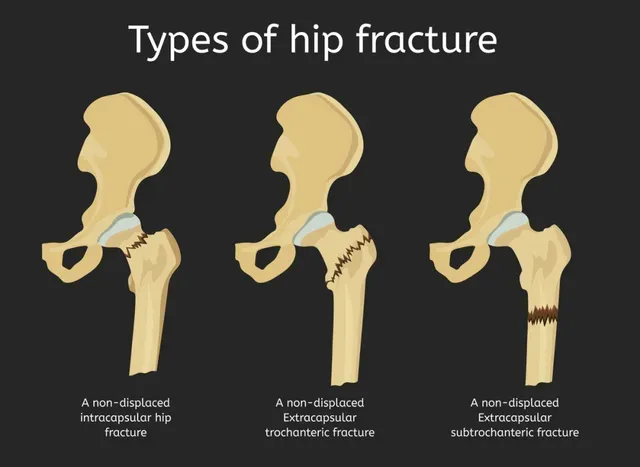Around one third of community residents 65 years or older fall at least once per year. Falls, and fear of falling, are associated with higher rates of depression, higher anxiety, decreased activity, reduced social life, higher medication use, and increased dependence on social services and informal care (6). Falls account for 40% of nursing home admissions (3). This is worrisome because by the year 2030, all baby boomers will be above 65 years of age (5). That’s 9 million Americans over 65 years of age! According to the Center for Disease Control and Prevention (CDC), more than 95% of hip fractures are caused by falling. Females experience three fourths of all hip fractures, due to women falling more often and having higher rates of osteoporosis. This article will focus on a multidisciplinary approach to reduce fall risk, including a fall prevention program.
A multidisciplinary approach is vital in the prevention of falls and reducing the risk of hip fractures. Your physician, optometrist, nutritionist, and physical therapist all play a role in this.
- Physicians will screen for osteoporosis. Osteoporosis is associated with higher rates of hip fractures.
- Optometrists will assess vision deficits. Age related vision changes are associated with increased fall risk.
- Nutritionists will address any nutritional deficits. Malnutrition is associated with higher rates of falls and more injurious falls (3).
- Physical therapists will assess balance and fall risk. Then, patients will start a fall prevention program. While a fall prevention program can be started at any point, it is key to start a fall prevention program before one has a fall.
The concern is that the majority of those entering a fall prevention program have already had multiple falls. This is distressing because half of those with a hip fracture never regain their previous level of function, and 20% die within 5 months (6). A fall prevention program will focus on static and dynamic balance training, gait training, assistive device training, appropriate strengthening, appropriate stretching, improving reaction time, performing a home-hazard assessment, along with other interventions (4). A home-hazard assessment includes modifying the home layout. This includes removing throw rugs, adding a grab bar in the shower and next to the toilet, putting railings on both sides of the stairs, and ensuring your home has appropriate lighting (especially night lights). Targeted exercise will ensure strengthening of muscles to improve balance and stretching of tight muscles to improve range of motion and flexibility. According to the Gulka et. al., exercise as a single intervention in nursing homes reduced the number of fallers and the rate of recurrent fallers by 36% and 41% respectively. If exercise alone can prevent falls by that much, a multidisciplinary approach consisting of different healthcare providers becomes even more pivotal.
Early intervention and the increased utilization of fall prevention programs can help prevent hospital visits, prevent surgeries, save time, save medical costs, and most importantly, save lives. If you or a loved one are at risk for falls, visit your local healthcare provider.
Author: Dr. Osama Imam PT, DPT, Cert. DN
References:
1. Gulka HJ, Patel V, Arora T, McArthur C, Iaboni A. Efficacy and Generalizability of Falls Prevention Interventions in Nursing Homes: A Systematic Review and Meta-analysis. J Am Med Dir Assoc. 2020;21(8):1024-1035.e4. doi:10.1016/j.jamda.2019.11.012
2. “Home Recreational Safety.” Center for Disease Control and Prevention, 20 Sept. 2016, www.cdc.gov/homeandrecreationalsafety/falls/adulthipfx.html.
3. Julius, M., Kresevic, D., Turcoliveri, M., Cialdella-Kam, L., & Burant, C. J. (2017). Malnutrition as a Fall Risk Factor. Federal practitioner : for the health care professionals of the VA, DoD, and PHS, 34(2), 27–30.
4. Karinkanta, S., Piirtola, M., Sievänen, H. et al. Physical therapy approaches to reduce fall and fracture risk among older adults. Nat Rev Endocrinol 6, 396–407 (2010). https://doi.org/10.1038/nrendo.2010.70
5. Knickman, J. R., & Snell, E. K. (2002). The 2030 problem: caring for aging baby boomers. Health services research, 37(4), 849–884. https://doi.org/10.1034/j.1600-0560.2002.56.x
6. Yardley L, Donovan-Hall M, Francis K, Todd C, Older people’s views of advice about falls prevention: a qualitative study, Health Education Research, Volume 21, Issue 4, August 2006, Pages 508–517, https://doi.org/10.1093/her/cyh077


Leave a Reply